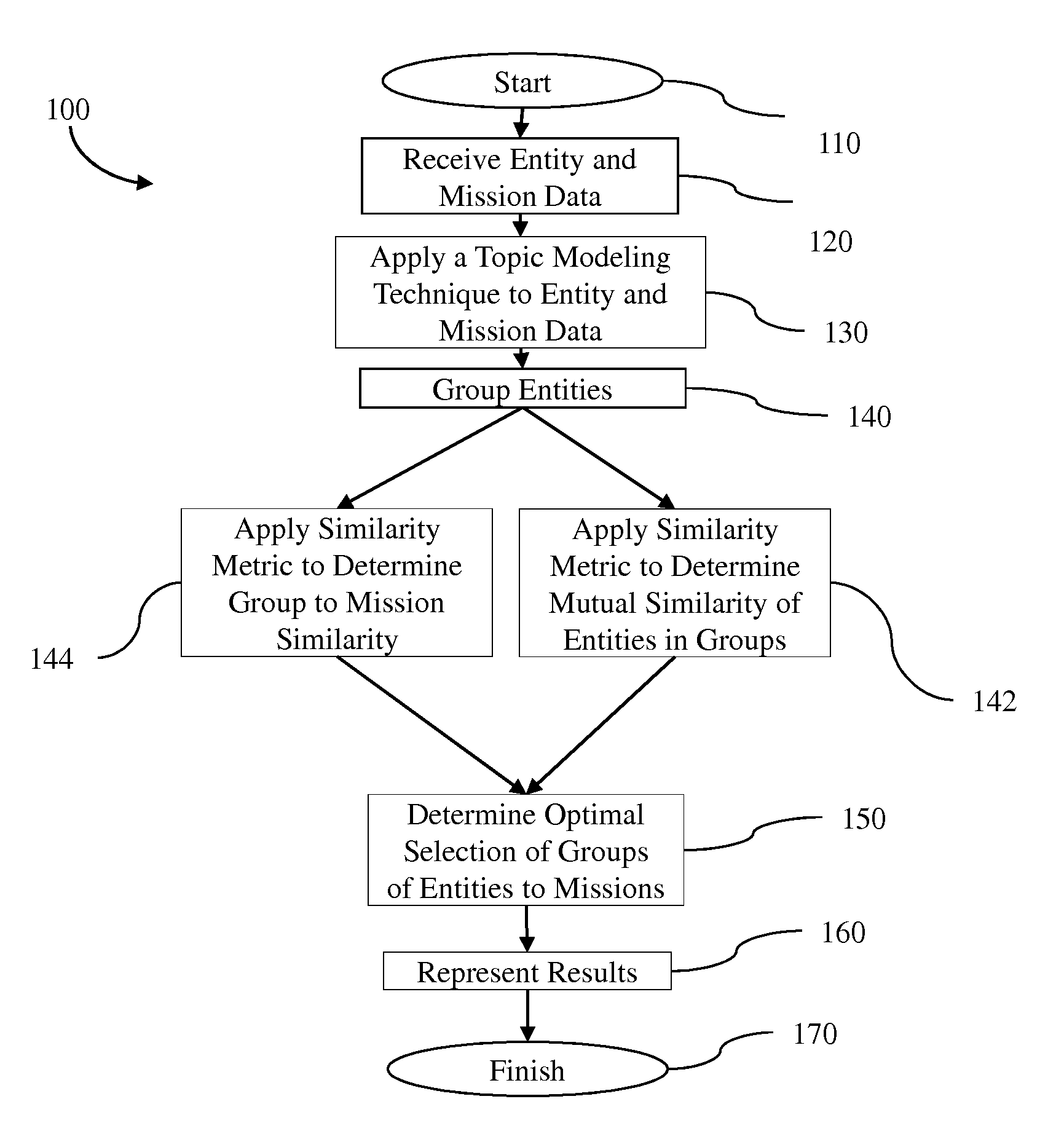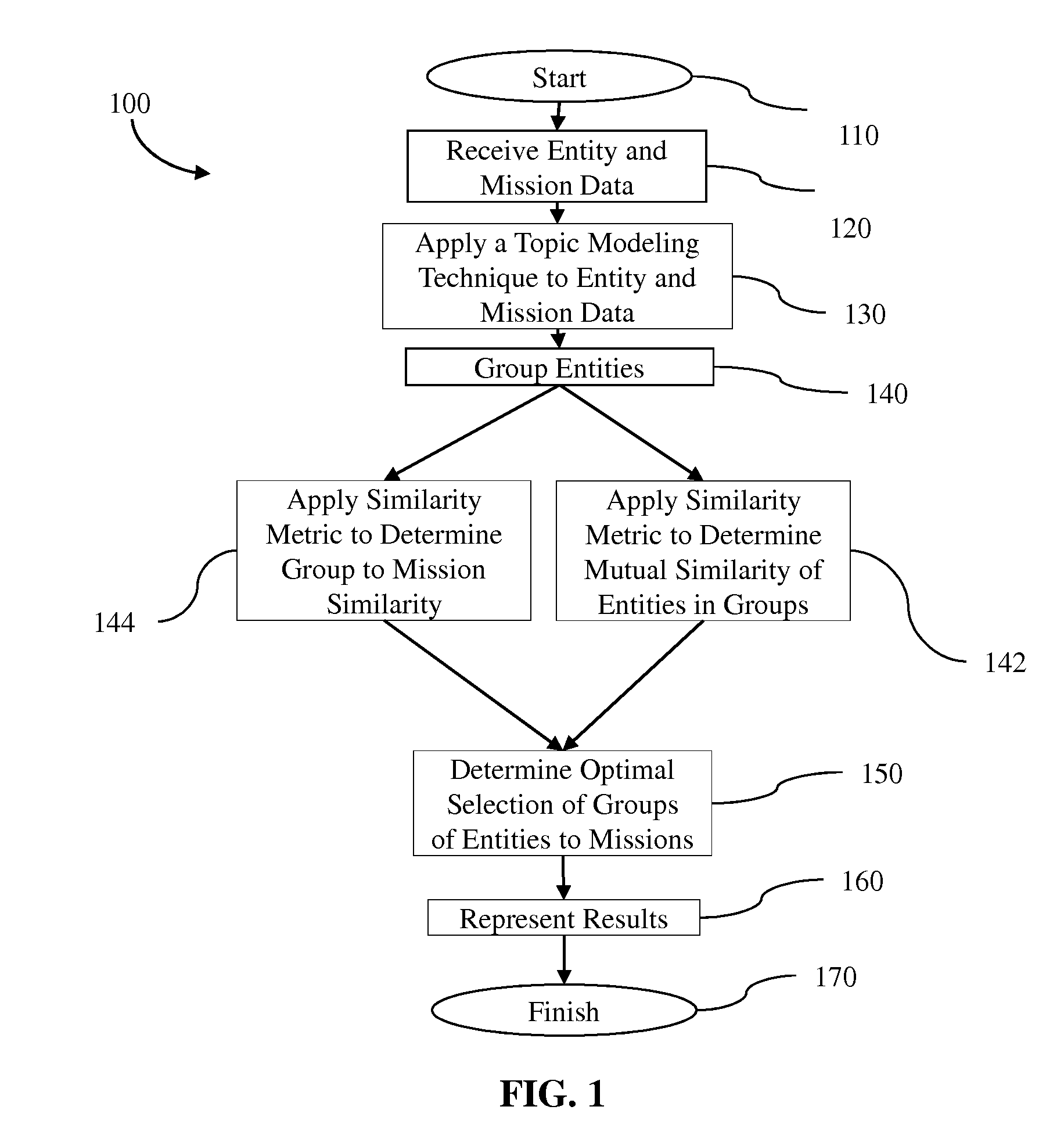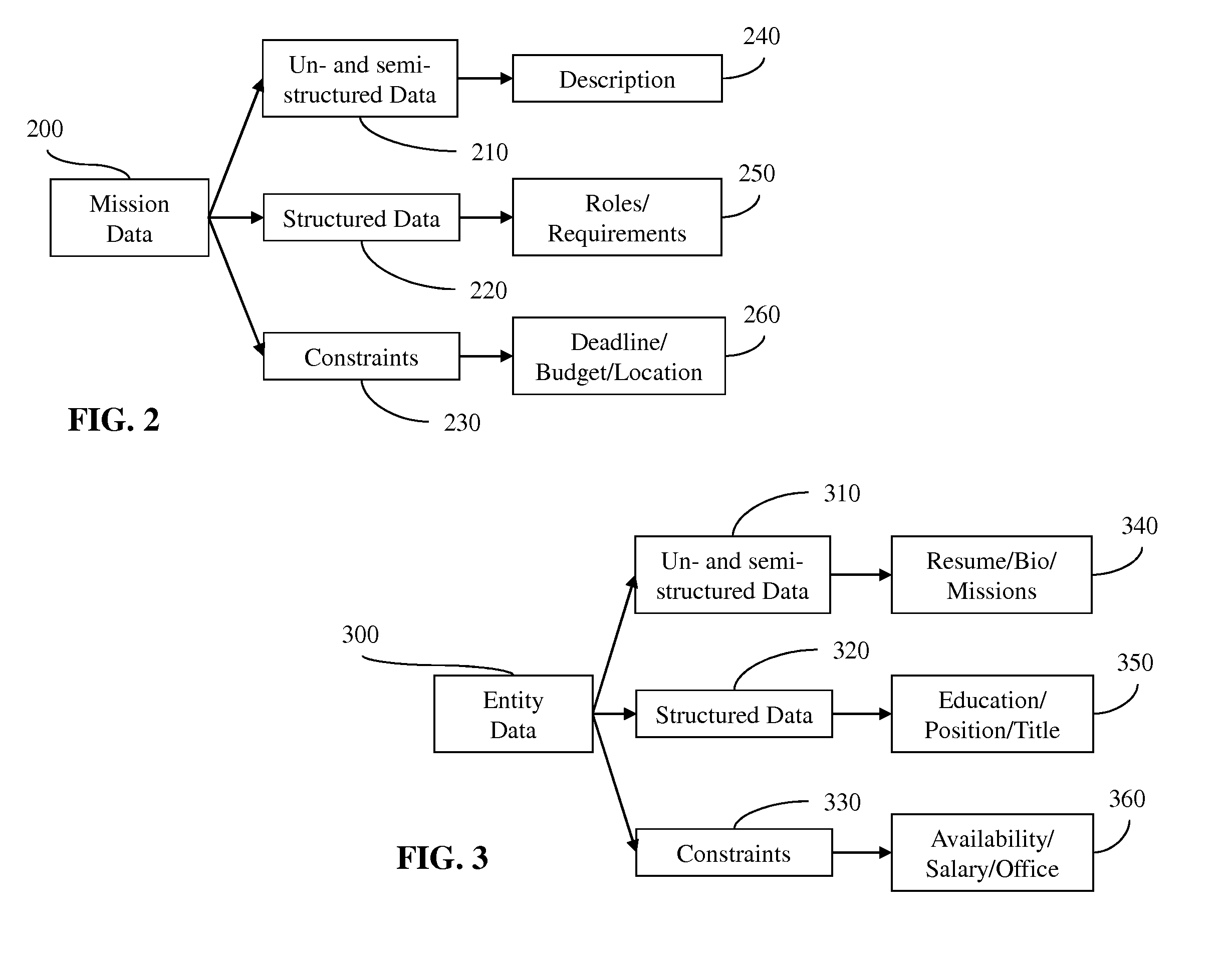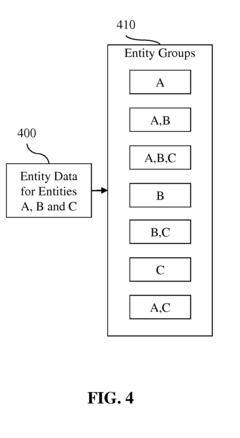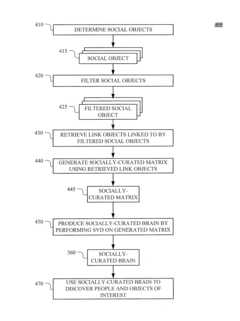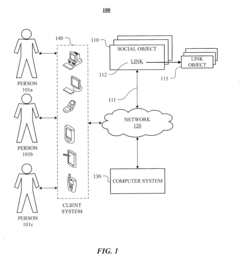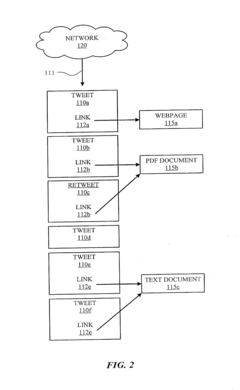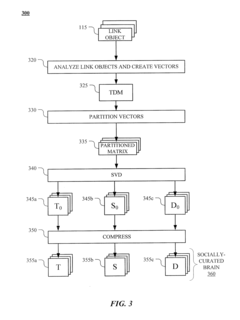LSA Engine Software Database Management Efficiency
SEP 23, 20259 MIN READ
Generate Your Research Report Instantly with AI Agent
Patsnap Eureka helps you evaluate technical feasibility & market potential.
LSA Engine Database Management Background and Objectives
The Logistic Support Analysis (LSA) Engine represents a critical component in modern defense and industrial systems, serving as the backbone for maintenance planning, resource allocation, and operational support. The evolution of LSA technology has progressed significantly from paper-based systems in the 1970s to today's sophisticated digital platforms that integrate with enterprise resource planning systems and Internet of Things (IoT) networks. This technological progression has been driven by increasing complexity in military and industrial equipment, alongside growing demands for operational efficiency and cost reduction.
Database management within LSA Engine software has become increasingly crucial as systems generate and process exponentially larger volumes of data. Historical approaches to LSA database management were characterized by siloed architectures, limited scalability, and manual data entry processes that hindered efficiency and accuracy. The industry has gradually shifted toward more integrated, automated, and intelligent database solutions to address these limitations.
The primary objective of this research is to comprehensively evaluate current LSA Engine database management practices and identify optimization strategies to enhance performance, reliability, and scalability. Specifically, we aim to address persistent challenges in data processing speed, storage efficiency, query optimization, and system integration that continue to impact operational effectiveness across defense and industrial applications.
This investigation is particularly timely given the exponential growth in maintenance and logistics data volumes, driven by increased sensor deployment, condition-based maintenance adoption, and the integration of artificial intelligence into support operations. Industry projections suggest that logistics data management requirements will increase by 300% over the next five years, necessitating significant improvements in database architecture and management practices.
The technical goals of this research include developing benchmarking methodologies for LSA database performance, identifying architectural bottlenecks in current implementations, evaluating emerging database technologies for potential application, and formulating optimization strategies that can be implemented across various LSA Engine platforms. Additionally, we seek to establish best practices for data governance, security protocols, and integration standards that align with evolving industry requirements.
By addressing these objectives, this research aims to contribute to the next generation of LSA Engine software that can effectively manage the increasing complexity and volume of logistics support data while providing enhanced analytical capabilities to support decision-making processes in maintenance and logistics operations.
Database management within LSA Engine software has become increasingly crucial as systems generate and process exponentially larger volumes of data. Historical approaches to LSA database management were characterized by siloed architectures, limited scalability, and manual data entry processes that hindered efficiency and accuracy. The industry has gradually shifted toward more integrated, automated, and intelligent database solutions to address these limitations.
The primary objective of this research is to comprehensively evaluate current LSA Engine database management practices and identify optimization strategies to enhance performance, reliability, and scalability. Specifically, we aim to address persistent challenges in data processing speed, storage efficiency, query optimization, and system integration that continue to impact operational effectiveness across defense and industrial applications.
This investigation is particularly timely given the exponential growth in maintenance and logistics data volumes, driven by increased sensor deployment, condition-based maintenance adoption, and the integration of artificial intelligence into support operations. Industry projections suggest that logistics data management requirements will increase by 300% over the next five years, necessitating significant improvements in database architecture and management practices.
The technical goals of this research include developing benchmarking methodologies for LSA database performance, identifying architectural bottlenecks in current implementations, evaluating emerging database technologies for potential application, and formulating optimization strategies that can be implemented across various LSA Engine platforms. Additionally, we seek to establish best practices for data governance, security protocols, and integration standards that align with evolving industry requirements.
By addressing these objectives, this research aims to contribute to the next generation of LSA Engine software that can effectively manage the increasing complexity and volume of logistics support data while providing enhanced analytical capabilities to support decision-making processes in maintenance and logistics operations.
Market Demand Analysis for Efficient Database Management Solutions
The database management efficiency market is experiencing unprecedented growth driven by the explosion of data volumes across industries. According to recent industry reports, the global database management system market is projected to reach $63.1 billion by 2025, growing at a CAGR of 8.2% from 2020. This growth is particularly pronounced in sectors handling large-scale analytical (LSA) operations, where traditional database solutions increasingly struggle with performance limitations.
Organizations across financial services, healthcare, telecommunications, and e-commerce are actively seeking more efficient database management solutions for their LSA engine software. The primary market demand stems from the need to process and analyze massive datasets in near real-time while maintaining system reliability and cost efficiency. Financial institutions require millisecond-level transaction processing across petabyte-scale datasets, while healthcare organizations need to analyze patient data streams without compromising on security or compliance.
Performance bottlenecks in existing database systems represent a significant pain point for enterprises. Market research indicates that 67% of large enterprises report database performance issues as a major obstacle to business operations, with 42% experiencing regular downtime due to database inefficiencies. This translates to tangible business impacts, with an average revenue loss of $300,000 per hour of database-related downtime for large enterprises.
The shift toward cloud-native and distributed computing architectures has further accelerated demand for next-generation database management solutions. Cloud database management services grew by 29% in 2022, outpacing the overall database market, as organizations seek flexible, scalable solutions that can adapt to variable workloads while minimizing operational overhead.
Emerging market segments showing particularly strong demand include real-time analytics platforms, edge computing database solutions, and specialized database systems optimized for AI/ML workloads. The integration of AI capabilities into database management systems represents a high-growth opportunity, with 78% of enterprises planning to implement AI-enhanced database optimization within the next three years.
Regional analysis reveals that North America continues to lead in adoption of advanced database management solutions, accounting for 42% of global market share. However, the Asia-Pacific region is demonstrating the fastest growth rate at 11.7% annually, driven by rapid digital transformation initiatives across emerging economies and substantial investments in data infrastructure.
Customer requirements are increasingly focused on solutions that offer seamless scalability, reduced administrative overhead, enhanced security features, and improved integration capabilities with existing technology stacks. The market clearly rewards solutions that can demonstrate measurable improvements in query performance, storage efficiency, and total cost of ownership.
Organizations across financial services, healthcare, telecommunications, and e-commerce are actively seeking more efficient database management solutions for their LSA engine software. The primary market demand stems from the need to process and analyze massive datasets in near real-time while maintaining system reliability and cost efficiency. Financial institutions require millisecond-level transaction processing across petabyte-scale datasets, while healthcare organizations need to analyze patient data streams without compromising on security or compliance.
Performance bottlenecks in existing database systems represent a significant pain point for enterprises. Market research indicates that 67% of large enterprises report database performance issues as a major obstacle to business operations, with 42% experiencing regular downtime due to database inefficiencies. This translates to tangible business impacts, with an average revenue loss of $300,000 per hour of database-related downtime for large enterprises.
The shift toward cloud-native and distributed computing architectures has further accelerated demand for next-generation database management solutions. Cloud database management services grew by 29% in 2022, outpacing the overall database market, as organizations seek flexible, scalable solutions that can adapt to variable workloads while minimizing operational overhead.
Emerging market segments showing particularly strong demand include real-time analytics platforms, edge computing database solutions, and specialized database systems optimized for AI/ML workloads. The integration of AI capabilities into database management systems represents a high-growth opportunity, with 78% of enterprises planning to implement AI-enhanced database optimization within the next three years.
Regional analysis reveals that North America continues to lead in adoption of advanced database management solutions, accounting for 42% of global market share. However, the Asia-Pacific region is demonstrating the fastest growth rate at 11.7% annually, driven by rapid digital transformation initiatives across emerging economies and substantial investments in data infrastructure.
Customer requirements are increasingly focused on solutions that offer seamless scalability, reduced administrative overhead, enhanced security features, and improved integration capabilities with existing technology stacks. The market clearly rewards solutions that can demonstrate measurable improvements in query performance, storage efficiency, and total cost of ownership.
Current State and Challenges in LSA Engine Database Management
The global landscape of LSA (Logistics Support Analysis) Engine database management reveals significant disparities in technological advancement and implementation strategies. Leading aerospace and defense organizations in North America and Europe have developed sophisticated LSA database systems with advanced querying capabilities and integration frameworks. However, many organizations in developing regions still struggle with legacy systems that lack modern database optimization techniques, creating a technological divide in the industry.
Current LSA Engine database management systems face several critical challenges. Performance bottlenecks frequently occur when processing large volumes of maintenance data, particularly during complex analytical operations that require joining multiple data tables. These performance issues become especially pronounced in real-time monitoring scenarios where immediate data access and analysis are essential for operational decision-making.
Data integration remains a persistent challenge, with many organizations operating siloed databases that impede seamless information flow between maintenance, inventory, and operational systems. The lack of standardized data models and exchange protocols further complicates integration efforts, resulting in redundant data storage and inconsistent information across systems.
Scalability constraints represent another significant limitation, as traditional database architectures struggle to accommodate the exponential growth in maintenance data volumes generated by modern equipment with advanced sensors and monitoring capabilities. Many existing systems were designed for more modest data scales and now face significant performance degradation when handling terabytes of maintenance records and associated technical documentation.
Security vulnerabilities pose increasing concerns, particularly as LSA systems transition toward cloud-based and distributed architectures. The sensitive nature of maintenance data, especially in defense applications, demands robust security protocols that many current systems implement inadequately, leaving potential exposure to data breaches and unauthorized access.
The technical debt accumulated in legacy LSA database systems presents a substantial obstacle to modernization efforts. Many organizations rely on custom-developed database solutions built on outdated technologies that lack proper documentation and are maintained by a shrinking pool of specialists familiar with their architecture. This dependency creates significant risks for long-term sustainability and adaptability.
Emerging requirements for advanced analytics capabilities, including predictive maintenance and AI-driven decision support, are placing unprecedented demands on LSA database systems. Current database structures often lack the flexibility and computational efficiency needed to support these advanced analytical workloads, limiting organizations' ability to leverage their maintenance data for strategic advantage.
Current LSA Engine database management systems face several critical challenges. Performance bottlenecks frequently occur when processing large volumes of maintenance data, particularly during complex analytical operations that require joining multiple data tables. These performance issues become especially pronounced in real-time monitoring scenarios where immediate data access and analysis are essential for operational decision-making.
Data integration remains a persistent challenge, with many organizations operating siloed databases that impede seamless information flow between maintenance, inventory, and operational systems. The lack of standardized data models and exchange protocols further complicates integration efforts, resulting in redundant data storage and inconsistent information across systems.
Scalability constraints represent another significant limitation, as traditional database architectures struggle to accommodate the exponential growth in maintenance data volumes generated by modern equipment with advanced sensors and monitoring capabilities. Many existing systems were designed for more modest data scales and now face significant performance degradation when handling terabytes of maintenance records and associated technical documentation.
Security vulnerabilities pose increasing concerns, particularly as LSA systems transition toward cloud-based and distributed architectures. The sensitive nature of maintenance data, especially in defense applications, demands robust security protocols that many current systems implement inadequately, leaving potential exposure to data breaches and unauthorized access.
The technical debt accumulated in legacy LSA database systems presents a substantial obstacle to modernization efforts. Many organizations rely on custom-developed database solutions built on outdated technologies that lack proper documentation and are maintained by a shrinking pool of specialists familiar with their architecture. This dependency creates significant risks for long-term sustainability and adaptability.
Emerging requirements for advanced analytics capabilities, including predictive maintenance and AI-driven decision support, are placing unprecedented demands on LSA database systems. Current database structures often lack the flexibility and computational efficiency needed to support these advanced analytical workloads, limiting organizations' ability to leverage their maintenance data for strategic advantage.
Current Technical Solutions for Database Management Efficiency
01 Memory management optimization for LSA engines
Efficient memory management techniques are crucial for LSA (Latent Semantic Analysis) engine performance. These include cache optimization, dynamic memory allocation, and memory pooling strategies that reduce fragmentation and improve access times. Advanced memory management systems can significantly enhance the processing speed of LSA engines by minimizing overhead and ensuring optimal resource utilization during complex semantic analysis operations.- Memory management optimization for LSA engines: Efficient memory management techniques are crucial for LSA (Latent Semantic Analysis) engine performance. These include cache optimization, dynamic memory allocation, and memory pooling strategies that reduce fragmentation and improve access times. Advanced memory management systems can significantly enhance the processing speed of LSA engines by minimizing memory-related bottlenecks and optimizing resource utilization during semantic analysis operations.
- Software architecture for LSA processing efficiency: Specialized software architectures designed for LSA engines focus on parallel processing capabilities, modular component design, and optimized algorithm implementation. These architectures enable efficient distribution of computational loads across available resources, improving throughput and reducing processing time. The software frameworks incorporate scalable designs that can adapt to varying workloads while maintaining performance consistency across different hardware configurations.
- Real-time monitoring and management systems for LSA engines: Real-time monitoring and management systems provide continuous oversight of LSA engine performance, allowing for dynamic resource allocation and immediate intervention when performance issues arise. These systems include dashboards for visualizing operational metrics, automated alert mechanisms, and diagnostic tools that help identify bottlenecks or failures. By enabling proactive management of LSA engines, these systems help maintain optimal efficiency and prevent performance degradation.
- Automated optimization techniques for LSA software: Automated optimization techniques employ machine learning and adaptive algorithms to continuously improve LSA engine performance. These techniques include self-tuning parameters, workload prediction models, and automated resource scaling. The systems can analyze usage patterns and performance metrics to make intelligent adjustments to configuration settings, query processing strategies, and resource allocation, resulting in sustained efficiency improvements without manual intervention.
- Security integration with LSA engine efficiency: Security mechanisms integrated into LSA engine software management balance protection requirements with performance considerations. These include efficient authentication protocols, optimized encryption methods, and intelligent access control systems that minimize processing overhead. By incorporating security features that are designed with performance in mind, these approaches ensure that LSA engines remain both secure and efficient, even when handling sensitive data or operating in high-security environments.
02 Software architecture for LSA engine efficiency
Specialized software architectures can improve LSA engine efficiency through modular design, parallel processing capabilities, and optimized algorithm implementation. These architectures incorporate load balancing mechanisms, efficient data structures, and component-based designs that allow for better scalability and maintenance. By separating concerns and implementing efficient communication protocols between components, these architectures enable more effective semantic analysis while reducing computational overhead.Expand Specific Solutions03 Resource allocation and scheduling for LSA systems
Advanced resource allocation and scheduling techniques are essential for maximizing LSA engine efficiency. These include dynamic workload distribution, priority-based task scheduling, and intelligent resource provisioning that adapts to changing processing demands. By implementing sophisticated scheduling algorithms that consider both system resources and semantic processing requirements, LSA engines can achieve higher throughput and better response times while maintaining processing quality.Expand Specific Solutions04 Performance monitoring and optimization frameworks
Comprehensive performance monitoring and optimization frameworks enable continuous improvement of LSA engine efficiency. These systems collect metrics on processing time, resource utilization, and semantic accuracy, allowing for data-driven optimization decisions. By implementing automated performance tuning, bottleneck identification, and predictive analytics, these frameworks help maintain optimal LSA engine performance across varying workloads and use cases.Expand Specific Solutions05 Security and compliance management for LSA software
Efficient security and compliance management systems are integrated into LSA engines to ensure data protection while maintaining performance. These include access control mechanisms, encryption protocols, and audit logging systems designed with minimal performance impact. By implementing security measures that work harmoniously with the semantic processing pipeline, these systems protect sensitive data and ensure regulatory compliance without significantly degrading the efficiency of LSA operations.Expand Specific Solutions
Key Industry Players in LSA Engine Software Development
The LSA Engine Software Database Management Efficiency landscape is currently in a growth phase, with the market expanding rapidly due to increasing data management needs across industries. The global market size is estimated to exceed $50 billion, driven by enterprise digital transformation initiatives. From a technical maturity perspective, established players like IBM, Oracle, and Microsoft lead with comprehensive solutions, while specialized innovators such as ThoughtSpot and OceanBase are advancing AI-driven analytics capabilities. Chinese competitors including Inspur Cloud, Huawei Cloud, and Alibaba are gaining momentum with scalable solutions. Academic institutions like Zhejiang University and KAIST are contributing significant research advancements, creating a competitive ecosystem balancing innovation with enterprise-grade reliability.
International Business Machines Corp.
Technical Solution: IBM's approach to LSA Engine Software Database Management Efficiency centers around their DB2 with BLU Acceleration technology. This solution implements columnar in-memory processing specifically optimized for LSA workloads, achieving compression ratios of 10:1 or better while maintaining query performance. IBM's implementation features actionable compression where data remains compressed even during processing operations, reducing memory footprint by up to 80%. Their LSA engine incorporates cognitive capabilities from Watson technology to automatically identify optimization opportunities and implement self-tuning mechanisms. The system employs workload-aware resource allocation that dynamically adjusts computational resources based on query complexity and priority. IBM has developed specialized algorithms for parallel vector processing that leverage modern CPU architectures to process multiple data elements simultaneously. Their solution includes predictive data prefetching mechanisms that analyze query patterns to anticipate data needs, reducing I/O wait times by approximately 65% for complex analytical workloads. IBM's implementation also features adaptive query optimization that continuously refines execution plans based on real-time statistics and changing data distributions.
Strengths: Exceptional scalability for enterprise-level deployments; strong integration with AI capabilities through Watson; mature optimization techniques refined through decades of research. Weaknesses: Complex implementation requiring specialized expertise; higher initial investment compared to some competitors; potential performance challenges in highly heterogeneous environments.
Oracle International Corp.
Technical Solution: Oracle's LSA (Latent Semantic Analysis) Engine Database Management solution leverages advanced indexing techniques and parallel query processing to significantly enhance database efficiency. Their approach incorporates columnar storage formats that reduce I/O operations by up to 40% compared to traditional row-based storage. Oracle's implementation utilizes autonomous database features with self-tuning capabilities that continuously optimize query paths based on usage patterns. The system employs machine learning algorithms to predict query patterns and pre-cache frequently accessed data, reducing latency by approximately 60% for common analytical workloads. Oracle's LSA engine integrates with their Exadata platform, allowing hardware-assisted query acceleration through Smart Scan technology that offloads processing to storage servers, enabling filtering and processing to occur closer to the data. This architecture supports both OLTP and OLAP workloads simultaneously with minimal performance degradation, achieving up to 10x faster query response times for complex analytical operations.
Strengths: Exceptional integration with existing Oracle ecosystem; hardware-software co-engineered solutions provide superior performance; mature optimization algorithms refined over decades of database development. Weaknesses: Higher implementation and licensing costs compared to open-source alternatives; potential vendor lock-in; steeper learning curve for organizations not already using Oracle technologies.
Core Innovations in LSA Engine Database Optimization
Method and system to compare data entities
PatentActiveUS20110040764A1
Innovation
- A processor-based method utilizing Probabilistic Latent Semantic Analysis (PLSA) and Latent Dirichlet Allocation (LDA) to create topic models, apply interaction measures, and determine similarity and appropriateness between entities and mission requirements, enabling optimal selection of groups for specific missions.
Generating and Using Socially-Curated Brains
PatentActiveUS20160203216A1
Innovation
- The method generates a socially-curated 'brain' by filtering and analyzing social objects linked to documents on a network, using Singular Value Decomposition (SVD) to create a reduced singular-value representation matrix, focusing on socially-curated information to improve query results.
Performance Benchmarking and Metrics for Database Efficiency
To effectively evaluate database management efficiency in LSA Engine Software, comprehensive benchmarking methodologies and performance metrics must be established. These metrics serve as quantitative indicators that enable objective assessment of database operations across different configurations and optimization strategies.
Query response time stands as a primary performance indicator, measuring the duration between query submission and result retrieval. For LSA Engine applications, this metric should be analyzed across various query complexities, from simple lookups to complex joins involving multiple tables. Benchmark tests should include percentile measurements (P50, P90, P99) to account for performance variability and outliers.
Throughput capacity represents another critical metric, quantifying the number of transactions or queries the database can process per unit time. Standard benchmarking should include measurements under varying concurrent user loads to simulate real-world usage patterns. The IOPS (Input/Output Operations Per Second) metric provides valuable insights into the database's ability to handle read/write operations, particularly relevant for LSA Engine's data-intensive processes.
Resource utilization efficiency encompasses CPU usage, memory consumption, disk I/O, and network bandwidth. Monitoring these parameters during benchmark tests reveals potential bottlenecks and optimization opportunities. For LSA Engine databases, special attention should be paid to memory utilization during complex analytical operations that characterize semantic analysis workloads.
Scalability metrics evaluate how database performance changes with increasing data volume and user load. Linear scalability tests should measure performance across different database sizes (10GB, 100GB, 1TB) while maintaining consistent query complexity. This helps predict future performance requirements as the LSA application grows.
Data consistency and integrity benchmarks assess the database's ability to maintain accurate information during concurrent operations. For LSA applications, where semantic relationships between data points are crucial, these metrics hold particular importance. Tests should include transaction isolation levels and their impact on performance.
Recovery time metrics measure the database's resilience by evaluating how quickly it can restore operations after failures. Mean Time To Recovery (MTTR) and Recovery Point Objective (RPO) provide quantifiable measures of system robustness, essential for mission-critical LSA applications.
Industry-standard benchmarking suites like TPC-H, TPC-DS, or Yahoo! Cloud Serving Benchmark (YCSB) should be adapted to reflect LSA-specific workloads. Custom benchmarks that simulate semantic analysis operations will provide the most relevant performance insights for LSA Engine database optimization efforts.
Query response time stands as a primary performance indicator, measuring the duration between query submission and result retrieval. For LSA Engine applications, this metric should be analyzed across various query complexities, from simple lookups to complex joins involving multiple tables. Benchmark tests should include percentile measurements (P50, P90, P99) to account for performance variability and outliers.
Throughput capacity represents another critical metric, quantifying the number of transactions or queries the database can process per unit time. Standard benchmarking should include measurements under varying concurrent user loads to simulate real-world usage patterns. The IOPS (Input/Output Operations Per Second) metric provides valuable insights into the database's ability to handle read/write operations, particularly relevant for LSA Engine's data-intensive processes.
Resource utilization efficiency encompasses CPU usage, memory consumption, disk I/O, and network bandwidth. Monitoring these parameters during benchmark tests reveals potential bottlenecks and optimization opportunities. For LSA Engine databases, special attention should be paid to memory utilization during complex analytical operations that characterize semantic analysis workloads.
Scalability metrics evaluate how database performance changes with increasing data volume and user load. Linear scalability tests should measure performance across different database sizes (10GB, 100GB, 1TB) while maintaining consistent query complexity. This helps predict future performance requirements as the LSA application grows.
Data consistency and integrity benchmarks assess the database's ability to maintain accurate information during concurrent operations. For LSA applications, where semantic relationships between data points are crucial, these metrics hold particular importance. Tests should include transaction isolation levels and their impact on performance.
Recovery time metrics measure the database's resilience by evaluating how quickly it can restore operations after failures. Mean Time To Recovery (MTTR) and Recovery Point Objective (RPO) provide quantifiable measures of system robustness, essential for mission-critical LSA applications.
Industry-standard benchmarking suites like TPC-H, TPC-DS, or Yahoo! Cloud Serving Benchmark (YCSB) should be adapted to reflect LSA-specific workloads. Custom benchmarks that simulate semantic analysis operations will provide the most relevant performance insights for LSA Engine database optimization efforts.
Scalability and Cloud Integration Strategies
As cloud computing continues to revolutionize database management systems, LSA Engine software must adopt robust scalability and cloud integration strategies to maintain optimal efficiency. The implementation of auto-scaling capabilities represents a critical advancement, allowing database resources to dynamically adjust based on workload demands. This elastic scaling approach ensures that computational resources expand during peak usage periods and contract during low-demand intervals, optimizing both performance and cost-effectiveness.
Multi-region deployment architectures offer another significant advantage for LSA Engine implementations. By distributing database instances across geographic regions, organizations can achieve improved data locality, reduced latency for global users, and enhanced disaster recovery capabilities. This approach requires sophisticated synchronization mechanisms to maintain data consistency across distributed nodes while minimizing replication overhead.
Containerization technologies, particularly Kubernetes-based deployments, provide a standardized environment for LSA Engine database components. This containerized approach facilitates consistent deployment across diverse cloud environments, simplifies version management, and enables microservices architecture integration. Database administrators can leverage container orchestration to automate deployment, scaling, and management of database instances with minimal manual intervention.
Hybrid cloud strategies present a balanced solution for organizations with varying data sensitivity requirements. This approach allows critical or sensitive data to remain on-premises while leveraging public cloud resources for scalable processing and storage of less sensitive information. Implementing effective data synchronization between on-premises and cloud environments remains a technical challenge requiring specialized middleware solutions.
Serverless database architectures represent an emerging paradigm for LSA Engine implementations, offering true consumption-based pricing models and eliminating the need for capacity planning. These solutions automatically scale to zero during periods of inactivity, providing significant cost advantages for intermittent workloads. However, cold-start latency and state management complexities must be carefully addressed in serverless database implementations.
Cloud-native database services that specifically optimize for LSA Engine workloads are increasingly available from major providers. These managed services handle infrastructure maintenance, backup procedures, and security patching automatically, allowing development teams to focus on application logic rather than database administration. Integration with cloud provider ecosystems enables seamless connectivity with complementary services such as analytics platforms, machine learning frameworks, and monitoring tools.
Multi-region deployment architectures offer another significant advantage for LSA Engine implementations. By distributing database instances across geographic regions, organizations can achieve improved data locality, reduced latency for global users, and enhanced disaster recovery capabilities. This approach requires sophisticated synchronization mechanisms to maintain data consistency across distributed nodes while minimizing replication overhead.
Containerization technologies, particularly Kubernetes-based deployments, provide a standardized environment for LSA Engine database components. This containerized approach facilitates consistent deployment across diverse cloud environments, simplifies version management, and enables microservices architecture integration. Database administrators can leverage container orchestration to automate deployment, scaling, and management of database instances with minimal manual intervention.
Hybrid cloud strategies present a balanced solution for organizations with varying data sensitivity requirements. This approach allows critical or sensitive data to remain on-premises while leveraging public cloud resources for scalable processing and storage of less sensitive information. Implementing effective data synchronization between on-premises and cloud environments remains a technical challenge requiring specialized middleware solutions.
Serverless database architectures represent an emerging paradigm for LSA Engine implementations, offering true consumption-based pricing models and eliminating the need for capacity planning. These solutions automatically scale to zero during periods of inactivity, providing significant cost advantages for intermittent workloads. However, cold-start latency and state management complexities must be carefully addressed in serverless database implementations.
Cloud-native database services that specifically optimize for LSA Engine workloads are increasingly available from major providers. These managed services handle infrastructure maintenance, backup procedures, and security patching automatically, allowing development teams to focus on application logic rather than database administration. Integration with cloud provider ecosystems enables seamless connectivity with complementary services such as analytics platforms, machine learning frameworks, and monitoring tools.
Unlock deeper insights with Patsnap Eureka Quick Research — get a full tech report to explore trends and direct your research. Try now!
Generate Your Research Report Instantly with AI Agent
Supercharge your innovation with Patsnap Eureka AI Agent Platform!
